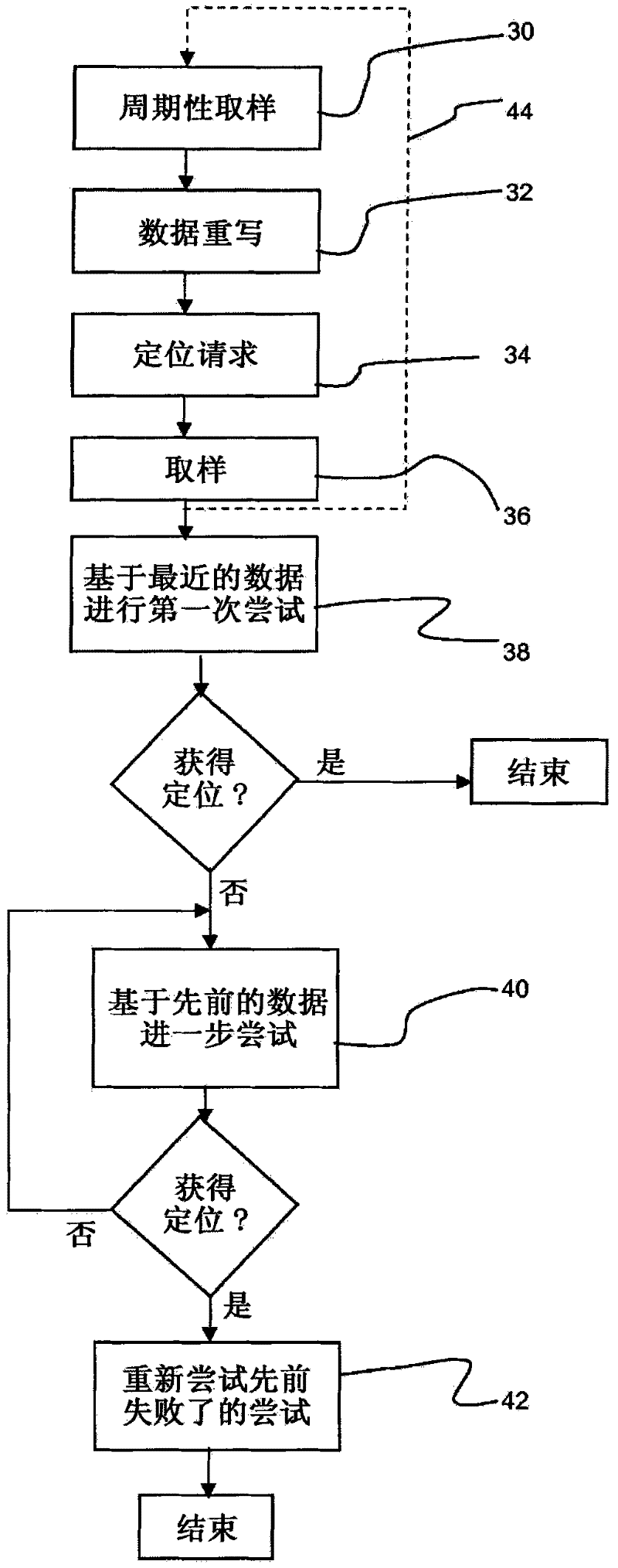Event location determination
A technology for event and signal determination, which is applied in the field of determining the location of events of interest, and can solve the problem of power consumption of the tracking system
- Summary
- Abstract
- Description
- Claims
- Application Information
AI Technical Summary
Problems solved by technology
Method used
Image
Examples
Embodiment Construction
[0053] The present invention provides a method of processing the most recent chunk of data samples in an attempt to obtain a definite position of the fix. If this attempt is unsuccessful, blocks of data samples recorded at earlier times in the sequence are processed to try again to obtain a fix until a fix is obtained. The used historical data chunks are irregularly spaced in time such that the used data samples are more densely distributed in relatively recent times than in relatively earlier times.
[0054] The invention can be used in a full-featured GPS receiver or in capture and later process applications. In each case, however, the device implements a form of capture-and-later-processing functionality in which data captures are stored for future use in obtaining a position fix.
[0055] In a typical capture-and-later-process application, a small capture device that stores short "captures" of IF data samples into memory can essentially upload its IF data captures to a ...
PUM
 Login to View More
Login to View More Abstract
Description
Claims
Application Information
 Login to View More
Login to View More - R&D
- Intellectual Property
- Life Sciences
- Materials
- Tech Scout
- Unparalleled Data Quality
- Higher Quality Content
- 60% Fewer Hallucinations
Browse by: Latest US Patents, China's latest patents, Technical Efficacy Thesaurus, Application Domain, Technology Topic, Popular Technical Reports.
© 2025 PatSnap. All rights reserved.Legal|Privacy policy|Modern Slavery Act Transparency Statement|Sitemap|About US| Contact US: help@patsnap.com



